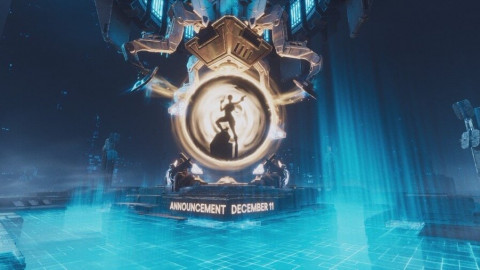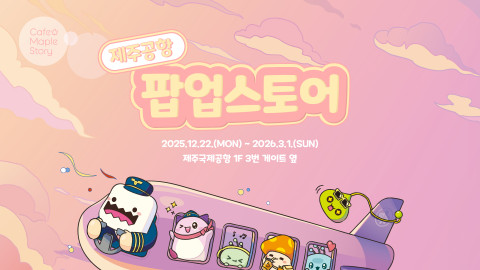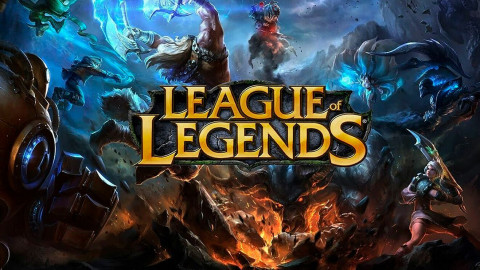
When I was sexually assaulted seven years ago, my mom drove me to our local police station and I stood in its cavernous lobby to deliver a meticulous, painfully public account of what had been done to me. I had brought a letter—written with a ballpoint pen in my shaky handwriting on a sheet of smudged notebook paper—in the hopes that I could bypass this part of the police report, but I had no such luck. The officer behind the desk wanted to hear it from me, aloud, right then and there in that lobby, so I told him, quietly, so that the others couldn’t hear.
Shortly thereafter, I was taken to a grey, windowless room with metal chairs and fluorescent lighting and a balding detective. He, too, asked me to tell him what had happened. I did. I recounted my story for the third time that day—first to my mom, then to the officer, and again to the detective—and then he told me what I had already known: unless I had more evidence, there was nothing they could do.
I didn’t care by that point. I just wanted to go home.
Thank you, I said. I understand.
It was one of the most agonizing, embarrassing experiences of my life. Each word burned on its way out. Answering the questions they posed felt impossible. I spoke to the floor when I could, trying to forget that my mom was standing next to me and that there was another family, reporting some other crime, a few steps to my left. Even as I’ve worked to forget the details of the assault itself, my memory of that visit to the police station remains crystal clear.
So I can only imagine what those women who have come forward with stories of their sexual assault and rape over the past two weeks are going through. I can only imagine the pain of detailing your attack for the Internet’s consumption; for anonymous strangers, who will never care for you, to pick apart, piece by piece, and pass judgment. The Internet is not renowned for fostering civility, much less empathy, and so I thank you for your bravery. You shouldn’t have to detail your stories to strangers, to lay them out for public question and debate, in order for action to be taken or change to be made.
But here we are.
What these testimonies have exposed to the general public is something these women and their female peers already knew: the gaming/esports industry is a hostile environment. Men are shocked and stunned by the pervasiveness of assault, while women are exhausted by the fight. Exasperated. Angry that their warnings have fallen on deaf ears for so long.
Indeed, it is women who must be aware of their vulnerability at all times—at conventions and at after-parties, and at gaming houses, and on Discord, and in games themselves. It is women who do their utmost to shield each other from the looming possibility of what they have been warned of their entire lives, and it is women who are, right now, replaying every social event to see if they somehow missed something that could have clued them in on what was about to happen to their friends or to themselves.
This last week has been less about women learning that this industry is dangerous and more about their male peers finally understanding the reality—and the urgency—of this danger. In doing so, men are coming to the overdue realization that to tolerate a culture of sexual harassment is to foster a litany of sexual abuse cases.
Men throughout the industry are clutching their partners closer at night, smothering them in promises that they would never let the things they are reading about happen to them, while those same women are—statistically-speaking—battling an onslaught of reminders that it already has. One in four women will be raped in their lifetime, per the CDC. That is devastating.
Here are some other statistics:
Nearly one in ten women are raped by an intimate partner in their lifetime. Moreover, in eight of ten rape cases, the victim knew the assailant. One in five women is sexually assaulted in college. More than one-third of women who report being raped before the age of 18 also experience rape as an adult. About three out of every four rapes go unreported. Perpetrators of sexual violence are less likely to be convicted than other violent criminals.

These are things women generally know, or otherwise have no trouble believing, because they are regularly reminded from childhood of the normality—nay, the inevitability—of sexual violence. Rather than being seen as a problem men need to solve, sexual violence is internalized by women as something they need to prevent. It is no wonder then that women, often feeling so embarrassed, so ashamed, and so personally responsible in the aftermath of assault, say nothing at all.
“Why didn’t you say no?” and
“Why did you keep hanging around him?” and
“Why didn’t you go to the police?” and
“Why is this only coming out now?” and
“Why didn’t you call it rape when it happened?” are lobbed at victims like stones.
For those who have never been assaulted, these questions seem fair and obvious, because it is unimaginable to them that a victim could ever perceive their own sexual assault as anything other than simple and straight-forward—a verbal “no” given, ignored. The reality, however, is something more complicated.
So, that is what I have spent the last week thinking about: the monumental divide between how men imagine rape and how women experience sexual assault, and what we can do about it.
***
The popular notion of rape and rapists is shaped in large part by the media that we consume, particularly film, television, and now video games. Sexual violence is a difficult topic for women to discuss at all, much less in detail, with the men in their lives, who are far less likely than their female friends to share similar experiences. Thus, though they are likely to know a victim of sexual violence personally, most men’s idea of who rapists are and what rape looks like is heavily influenced by the media they consume.
Unfortunately, the depiction of sexual assault in media is overly simplistic and disingenuous, failing to represent the pain, confusion, and complexity with which victims may regard their attack and their attacker. Instead, media regularly uses sexual violence against women as a plot device to create conflict between male characters, as well as to satisfy male fantasies of defending female virtue with their fists.
"In reality, sexual violence takes many forms. Women have more than one memory of coercion, of inappropriate touching, of 'that was weird' and 'maybe if I pretend to be asleep, he’ll stop.'"
Other times rape plotlines are used as a ploy to “strengthen” female characters (see: Sansa Stark). In a similar vein, attempted rape is sometimes used to demonstrate a woman’s badassery—that is, this female protagonist fought off her would-be rapist instead of “letting” herself be victimized, and have we mentioned she’s not like other girls?
(It is impossible to adequately distill the massive, complex topic of the depiction of sexual violence in media into a few supporting paragraphs in this article, so I ask that you bear with me as I paint with broad strokes.)
The rapists themselves are always one-dimensionally evil characters—principal villains or otherwise nameless strangers, usually—whose sexual violence is an embellishment upon their already irredeemable characters. They’re probably murderers or something, too, and the audience is rooting for their downfall anyway.
Likewise, rape itself is narrowly depicted. It is usually a spectacularly violent struggle, with futile kicks and punches and screams for help. The victim is then shown overpowered and raped off-screen, before she is left weeping or hysterical as her attacker exits stage left.
Non-rape sexual assault is less commonly depicted, much less explored in enough depth to leave an impression. Those characters who do sexually harass or assault women typically fall into one of two categories: they are either the funny friend who can’t get a girlfriend or the skeevy dude sporting a pedo-stache. The former’s sexual harassment or assault of female characters is framed as harmless fun, while the appearance of the latter is the extent of their character development.
This limited representation of rape and sexual assault perpetuates a false dichotomy in which men are either “bad guy rapists” or “too normal to be sexually violent.” It lulls men into inaction on the flawed belief that they and the men with which they surround themselves must be the latter, simply by virtue of acquaintance. In other words, a simplistic understanding of sexual violence invites the belief that sexually violent persons are easily identified; could not be found in one’s own social circles; and, are easily brought to justice.
"To browbeat [victims] for not immediately, definitively attempting to bring criminal charges against their attackers is to demonstrate a fundamental misunderstanding of sexual assault."
But as women well know, in real life, sexual violence is not exclusive to men who announce their intentions via lecherous smiles and disconcerting facial hair. Likewise, sexual violence is not limited to rape, much less the kind shown on TV.
That is how men are made to imagine all sexual violence, though, so it is little wonder that men throughout gaming are struggling to—or, in many cases, outright refusing to—accept that their rich, handsome, charismatic idols could be, at once, seemingly good guys and sexually violent. When men picture a sexual predator, they might see someone like Ramsay Bolton or a Criminal Minds villain. When women picture a sexual predator, they might see your favorite caster or player or streamer, because for them, sexual violence escapes the constraints of fiction.
In reality, sexual violence takes many forms. Women have more than one memory of coercion, of inappropriate touching, of “that was weird” and “maybe if I pretend to be asleep, he’ll stop.” Men so often assume consent, and so often take silence as a yes, that women who thought they were in safe, platonic environments are scarred with memories of unwanted advances and unreciprocated touches.
Some women have memories of when their partner took “no” as “convince me,” and others have memories of when the conditions under which they consented to sex (e.g. “no penetration,” “wear a condom,” “pull out”) were broken. Others still have memories of quietly bearing a man’s assault for fear that any rejection would put them in more danger. Sometimes it can seem better to endure violation than to risk a violent escalation, and in the aftermath, it can seem easier to try to forget what happened than to confront one’s own misplaced feelings of guilt, shame, and personal responsibility.
Moreover, these memories of assault often involve—as the aforementioned statistics prove and women’s recent accounts attest—people they liked or loved; partners and crushes and colleagues and mutual friends. These are people their victims care(d) for and could not bring themselves to brand, even privately, as rapists or abusers. Those pre-existing relationships do not vanish in the aftermath of assault, and so they continue to color how one views and responds to their attack and attacker.
In short, victims’ experiences are often confused, complicated, and difficult to examine head-on, falling as they may between the accepted poles of “innocence” and “warranting jail time.” Victims consequently can and do minimize the validity and severity of their trauma. To browbeat them for not immediately, definitively attempting to bring criminal charges against their attackers is to demonstrate a fundamental misunderstanding of sexual assault.
It is often easier to repress memories of sexual violence than to seek justice—not because the abuser’s actions were “not actually that bad,” but because the options for recourse are so limited and unreliable. This is true in general and further exacerbated by the gaming industry’s immaturity. In the absence of human resource departments, allegations are reported to and handled by those with an economic incentive to look the other way.
Besides, when cut-and-dry rape cases so rarely guarantee consequences for rapists, how is one supposed to feel comfortable approaching anyone about these more common, less violent (but nonetheless important) instances of sexual assault? When the response to everything from in-game harassment to rape allegations is to first question the actions of the victim, how is a woman supposed to trust that her community will have her back? After all, it’s not only victims who minimize their experiences, but the gaming community as a whole.
Keemstar’s take on gaming’s #MeToo movement best illustrates this lack of empathy. Conspicuously posted in the hours after Yvonne and LilyPichu came forward with allegations against Fed, Keemstar’s two-minute video on the topic gave voice to what far, far too many people are thinking:
“If a guy’s making moves on you, and you don’t want that to happen, you [the victim] have gotta say no! That’s your responsibility! You have to say no!”
His words suggest that there is an onus on victims to ‘satisfactorily’ communicate no, but not an onus on victimizers to first secure a yes. His reasoning lends itself to the thinking that women exist in a default state of assumed consent. He implies that if a predator doesn’t have to try very hard to sexually assault someone—that if there isn’t that spectacular, made-for-TV struggle people require to reassure themselves that a woman hasn’t “let” herself be raped—then responsibility for the predator’s actions is shared with their victims.
It is this exact line of reasoning that minimizes and then normalizes the violation of women’s boundaries and bodies.
And it is utter bullshit.
Keemstar voiced the thought (shouted it, really) but it is not unique to him. It is but a fraction of the disdain women receive when they have the audacity to suggest that all sexual assault is bad; that they should not have to tolerate any violation of their bodies; and, that they have a right to warn other women against known predators.

Women in gaming are expected to tolerate such an overabundance of harassment that consequences for misogyny are only a possibility when misogyny manifests itself as a made-for-TV rape. Those who speak to any wrong behavior of lesser magnitude are derided and dismissed as clout-chasers seeking to “cancel” someone for their own gain. Again, the disconnect between how men imagine sexual violence and how women experience sexual violence results in a disconcerting lack of empathy for victims.
Yet it is the industry-wide tolerance of comparatively petty assault and misogynistic behavior that allows the perpetrators of sexual violence against women to prosper in this space. It is that tolerance which leaves women and young girls vulnerable to abuse. Everyone from chat trolls to industry leaders begrudgingly acknowledges sexual harassment as the price of female admission to the gaming space, and so behaviors that may otherwise be seen as warning signs are ignored. Misogynists prosper.
"During their rise to the top, many, many people excused [abusers'] behavior and ignored warning signs. At worst, some defended their actions for fear of what it might mean to our industries if they were to be outed."
We must grapple with sexual assault as a multi-faceted issue, or else we are liable to accept rampant sexual violence as the action of a few bad apples rather than the inevitable outcome of a culture that treats women as sexual objects. Indeed, how can one be surprised that Twitch is full of sexual abusers when its top creators tell their viewers, day in and day out, that any woman wearing a tank-top and a smile is begging for sexual attention?
***
There is a lot that isn’t being said here—trust me, I know. I know. I’ve written and deleted several thousand additional words about sexual assault in the gaming industry, and I’ve since had to accept that any one article on the topic can never touch on everything that needs to be said.
For instance, there’s something to be said about why so much of our attention has been diverted to and consumed by needless discussion of statistically insignificant false rape allegations. There’s something to be said about how men’s ad hominem attacks on their accusers are so immediately accepted as evidence of their innocence. There’s something to be said about “innocent until proven guilty,” and how the sudden willingness to surrender all power to pass judgment to flawed bureaucratic institutions insulates abusers from consequences. There’s something to be said about the importance of differentiating between personal conflicts and systemic abuses of power. There’s something to be said about how men’s nerdiness, or awkwardness, or assumed virginity is often taken as a license to violate women’s personal boundaries. There’s something to be said about why the accusation against Cinnpie resulted in the trending of a hashtag, but similar accusations against men who abuse young girls have historically resulted in the mourning of said abusers’ careers. There’s something to be said about how this isn’t an issue isolated to gaming and how it can’t be solved solely within gaming, much as we may try. There’s something to be said about—
Well, you get the gist.
There’s a lot that isn’t being said here.
But as this particular piece comes to a close, this is what we must remember moving forward:
Sexual abusers did not make it to the top of the gaming and esports industries by accident. We did not just get “unlucky.” These people are not just a “few bad apples.” They are the people we chose to follow, and to support, and to listen to, and during their rise to the top, many, many people excused their behavior and ignored warning signs. At worst, some defended their actions for fear of what it might mean to our industries if they were to be outed.
In the coming weeks, it will be tempting to leave this moment in the past, with little learned and little gained. We have dismantled a few bad organizations, and we should feel good about that. We have removed a few dangerous persons, and we should feel good about that. Those victories are important. It is satisfying to see those who have evaded consequences for so long finally, finally suffer under the weight of their actions.
But just as we have condemned some abusers, we have chosen to continue sheltering others. We have at times shied away from the root of these issues, because it is more difficult to identify and to condemn normalized sexual harassment than it is to condemn, say, blatant pedophilia. Moreover, it is difficult to have conversations about misogyny, period, without becoming entangled in individuals’ urgent need to count themselves as “one of the good ones.”
No one is laboring under the delusion that this is an issue quickly or easily resolved.
But it would be a monumental mistake to move on from this moment without internalizing how the industry’s normalization of sexual harassment both makes (young) women vulnerable to abuse and protects their abusers from the consequences. The gaming industry cannot be made safer for young women of the future simply by removing the abusers of today. The culture of this industry itself must change.
Sort by:
Comments :0






